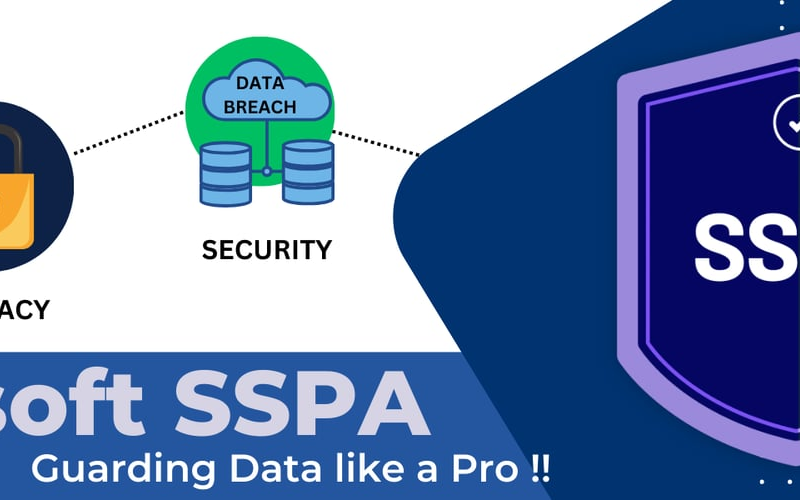In today’s digital landscape, data security and privacy are paramount for maintaining trust and compliance. Microsoft’s Supplier Security and Privacy Assurance (SSPA) program sets a high standard for suppliers, ensuring they adhere to rigorous security and privacy requirements when handling Microsoft’s data. For IT auditors, understanding and effectively implementing the SSPA program is crucial. This guide provides a comprehensive overview of the key elements of the SSPA.
Introduction to SSPA Program
The Supplier Security and Privacy Assurance (SSPA) program by Microsoft ensures that suppliers handling Microsoft’s data adhere to stringent security and privacy standards. This program mandates suppliers to regularly attest compliance with Microsoft’s Data Protection Requirements (DPR), conduct independent assessments, and manage a Data Processing Profile (DPP). IT auditors play a pivotal role in this ecosystem, acting as the unsung heroes of data privacy by meticulously evaluating and enforcing these controls. They ensure that every byte of data is protected, every risk mitigated, and every compliance box ticked, thereby safeguarding sensitive information from potential breaches and fostering a culture of trust and security.
Key Components
-
Data Processing Profile (DPP): Keeping it real.
The DPP outlines how a supplier handles data, providing a clear picture of their data processing activities and ensuring transparency. -
Data Protection Requirements (DPR): The rules of the game.
The DPR sets the mandatory security and privacy standards suppliers must follow to protect Microsoft’s data. -
Independent Assessments: Calling in the reinforcements.
These are third-party audits that verify a supplier’s compliance with the SSPA program’s stringent requirements. -
Compliance Status: Staying in the green zone.
This indicates whether a supplier is meeting the required standards, helping them maintain a compliant and secure status
Basic ITGC Controls
| Control Areas | Key Security Controls / Description |
|---|---|
| Access Controls | User Access Management: Authorized access only. |
| Multi-Factor Authentication: Multiple verification steps for extra security. | |
| Change Management | Change Control Processes: Formalized change requests and reviews. |
| Testing and Approval: Ensures changes are tested and approved. | |
| Data Backup and Recovery | Backup Procedures: Regularly back up critical data. |
| Recovery Testing: Test backup and recovery processes. | |
| Incident Management | Incident Response Plans: Predefined strategies for breaches. |
| Incident Detection and Reporting: Quick identification and reporting. | |
| Logical Security | System and Network Security: Protects IT infrastructure. |
| Patch Management: Regular system updates and fixes. | |
| Physical Security | Physical Access Controls: Restricts access to IT infrastructure. |
| Environmental Controls: Protects against environmental hazards. | |
| Data Encryption | Encryption Standards: Encrypts data at rest and in transit. |
| Audit and Logging | Logging and Monitoring Practices: Tracks system access and changes. |
| Log Retention and Review: Regular review of retained logs. | |
| Third-Party Management | Vendor Risk Management: Assesses and manages vendor risks. |
| Contractual Controls: Includes security requirements in vendor contracts. | |
| Compliance and Training | Compliance Programs and Regular Audits: Ensures ongoing adherence. |
| Security Awareness Training: Educates employees on security practices. |
Tools used conducting SSPA Audit
-
Risk Assessment Tools:
- Archer: Streamlines risk assessment processes. Archer
- MetricStream: Provides comprehensive risk management solutions. MetricStream
-
Compliance Management Tools:
-
SIEM Tools:
- Splunk: Monitors and analyzes security data. Splunk
- IBM QRadar: Detects and responds to security threats. IBMQRadar
-
Vulnerability Assessment Tools:
- Qualys: Identifies vulnerabilities in IT systems. Qualys
- Nessus: Performs comprehensive vulnerability assessments.
-
Incident Response Tools:
- Cortex XSOAR: Automates incident response processes.
- TheHive: Facilitates collaborative incident response. TheHive
-
Data Encryption Tools:
- Vormetric: Protects data through encryption and access controls.
- Azure Information Protection: Classifies and protects data. Azure Information Protection
-
Documentation and Workflow Tools:
- Confluence: Supports collaboration and documentation.
- JIRA: Manages project workflows and tasks.
-
Monitoring and Logging Tools:
Thus in Conclusion ..,
Ensuring compliance with Microsoft’s Supplier Security and Privacy Assurance (SSPA) program is no small feat, but it’s a crucial part of maintaining data security and trust in today’s digital landscape. By understanding and implementing the key IT General Controls (ITGC) and following a structured audit process, IT auditors can safeguard sensitive information and uphold high standards of privacy.
Through rigorous auditing, IT auditors not only verify compliance but also identify areas for improvement, ensuring continuous enhancement of security measures. This proactive approach helps in mitigating risks and preventing data breaches.
As the field of data security evolves, staying updated with the latest SSPA requirements and best practices is essential. Continuous learning and adaptation are key to maintaining effective audits and robust data protection frameworks. Remember, every audit is a step towards a more secure digital environment, making IT auditors the unsung heroes of data privacy.
By following these guidelines and embracing the importance of thorough audits, we can ensure that data remains secure and trusted, paving the way for a safer digital future
Source link
lol

